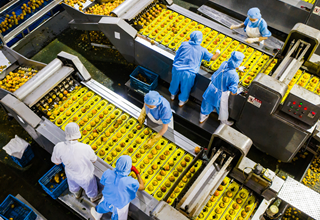Tianjin specialty snacks
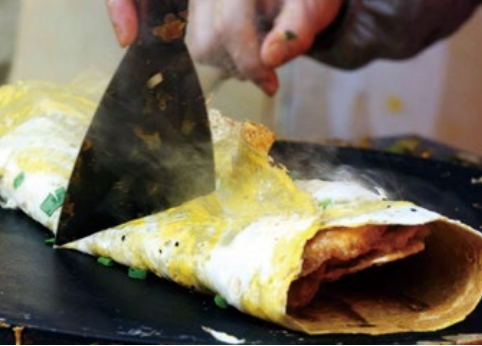
Pancake Rolled With Yau Char Kwai (煎饼果子 jianbingguozi)
This typical Tianjin breakfast is said to originate from Shandong province. The pancake is made of a blended liquid of mung bean, millet, spices, and water. After the pancake is ready, a fried dough stick is rolled in the pancake along with sauce and chopped green onions.
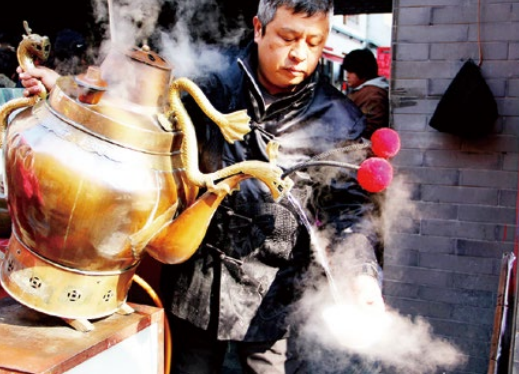
Tea soup (茶汤 chatang)
Tea soup is alleged to have originated in the Ming Dynasty (1368-1644). The main ingredients of tea soup are sorghum rice flour and hazelnut flour. The seasonings include brown sugar, white sugar, blue silk, red silk, sesame seeds, walnut kernels, assorted fruit, raisins, Beijing cake bars and pine nuts. People usually use boiling water to make the glutinous rice flour into a thin paste, and then add various seasonings so as to make it good to eat.
Exquisite skills are required to brew tea soup. The tea soup is generally made with a long copper pot. The master of the tea soup has a bowl in one hand and a copper pot in the other. The bowl in the left hand should wait just at the mouth of the spout.
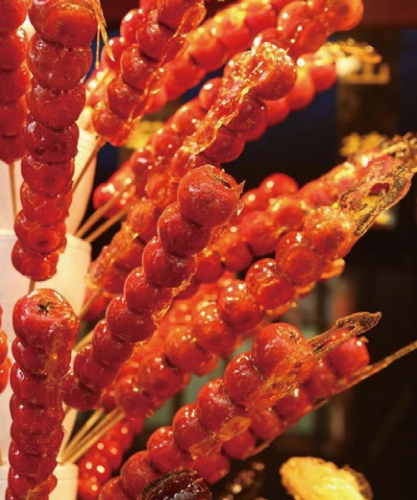
Sugar pile (糖堆 tangdui)
Sugar piles are common snacks in north China in winter. The ancient-styled practices began in the Song Dynasty (960-1279). Tea houses, theaters, and streets are full of sugar piles.
The main ingredients of the sugar pile are generally fresh fruits, such as hawthorn, strawberry, apple and grape. After the important steps of fruit-linking, sugar-boiling, sugar-dipping and cooling, the sugar gets hard and frozen, and tastes cold with a mix of sweet and sour.
Sugar piles are said to have the func tions of being appetizing, improving beauty, increasing intelligence and eliminating fatigue as well as clearing heat.
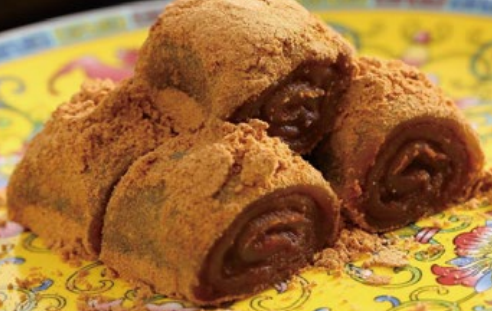
Lvdagunr (驴打滚)
It is one of the traditional snacks in Tianjin. Because the soy flour is sprinkled on top in the final processing, it is like the loess that was raised by wild donkeys which was rolled and rolled, so it was named "Lvdagunr" (donkey rolling).
The raw materials for Lvdagunr are yellow rice flour, soy flour, cheddar, sugar, sesame oil, osmanthus, crimson and melon. Its production is divided into three processes: blanking, filling and forming. The outer layer of Lvdagunr is covered with bean noodles, which are golden yellow. The inner layer is yellow, white and red, with vaery beautiful enamel. The texture of Lvdagunr is soft and the sweet bean paste is sweet, melting in people's mouth instantly. It is a traditional snack for all ages.

Copyright © Tianjin Municipal Government.
All rights reserved. Presented by China Daily.
京ICP备13028878号-35


